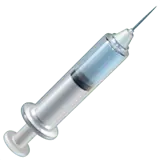Fungus gnats
sciarids


CLASSIFICATION
Animalia, Insecta, Diptera
ABOUT
Fungus gnats are small and relatively harmless flies. The presence of fungus gnats may indicate overwatering as the flies are attracted to the moist soil to lay eggs. Larvae feed on fungi in the soil and can cause damage to plant roots if the population is high and the roots are in wet soil. Damaged roots may lead to wilting, loss of vigor, poor growth, and yellowing.
How to treat?
 Biological
BiologicalLet the soil dry out.
Apply ecological products for plant protection (e.g. neem oil, horticultural soap, cinnamon).
Introduce natural enemies - predators, parasites, or diseases (e.g. beneficial nematodes, mite Hypoaspis miles, bacterium Bacillus thurigiensis).
 Chemical
ChemicalIf necessary, apply insecticide containing Diflubenzuron (GHS07: Harmful, GHS09: Environmental hazard).
 Disease prevention
Disease preventionAvoid overwatering. Wet soil promotes fungal growth, which serve as food for fungus gnats.
Cover exposed soil with sand to prevent adult gnats from laying the eggs.
Use sticky or pheromone traps.
Inspect new plants for signs of an infestation.